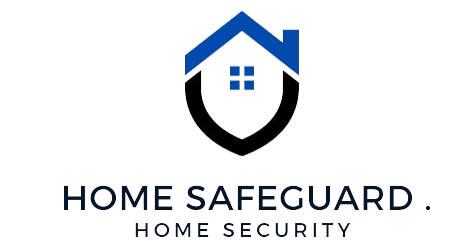As remote work becomes more common, the need for robust home security is paramount. Not only do remote workers need to safeguard physical property, but they must also secure sensitive data and devices.
The home office can be a vulnerable environment, as cyber threats and physical intrusions can jeopardize both personal and professional security.
As a remote worker, it’s essential to take proactive steps to secure your home office and digital workspace, ensuring a safe and productive environment.
This article outlines practical tips and best practices for securing your home office, protecting your devices, and preventing cyberattacks. From ensuring your home office’s physical safety to using strong passwords and encryption, these strategies are vital in defending against both physical and digital threats.
1. Secure Your Home Office Space
Securing your home office space is foundational to protecting sensitive work data. Not only are you working with proprietary information, but your devices themselves are often valuable targets for theft or hacking.
1.1 Physical Security of the Workspace
Start with basic physical security measures to protect your devices. Begin by locking the door to your home office when you’re not present. This seemingly simple step can prevent unauthorized access to your workspace, limiting the opportunity for thieves to access your equipment or sensitive information.
When positioning your workspace, ensure that your computer screen or monitor is not visible from windows or doors. This reduces the likelihood of someone spying on your sensitive information—a tactic known as “shoulder surfing.” Additionally, ensure your office is free from clutter, and use document storage solutions such as filing cabinets or safes to protect physical documents containing confidential information. Invest in a good shredder to dispose of papers securely.
1.2 Device Storage
Laptops, smartphones, tablets, and other devices should be stored out of sight when not in use. When leaving your office or workspace, lock your devices in a drawer or safe to prevent them from being easily stolen or tampered with.
2. Use Strong Passwords
In the digital era, passwords are the first line of defense against unauthorized access to your devices and accounts. As a remote worker, weak passwords are an open invitation for hackers, cybercriminals, or unauthorized persons to infiltrate your digital workspace.
2.1 Creating Strong Passwords
Your passwords should be complex, long, and unique to each account. Avoid common words or phrases that are easy to guess, and ensure they include a combination of upper and lowercase letters, numbers, and special characters. To create robust and memorable passwords, follow these essential guidelines:
| Characteristics | Examples | Avoid |
|---|---|---|
| Length | At least 12 characters | Short passwords (< 8 characters) |
| Variety | Mix upper/lowercase | Simple lowercase or uppercase |
| Complexity | Use numbers/special chars | Simple words, names, or phrases |
| Uniqueness | Unique for each account | Reusing passwords |
| Change Frequency | Every 90 days or sooner | Never changing passwords |
2.2 Password Management Tools
Given the challenge of creating and managing unique passwords for each account, a password manager is a must-have tool for remote workers. Password managers like LastPass, 1Password, or Dashlane can generate strong passwords for each account and store them securely.
These tools encrypt your password database with a master password and often include advanced features like:
- Two-factor authentication (2FA) support for added security
- Alerts for weak or reused passwords
- The ability to securely share passwords with others when necessary
- Secure backup of your passwords
Using a password manager ensures that you are practicing good password hygiene and reduces the risk of a breach due to weak passwords.
2.3 Best Password Practices
Along with using a password manager, there are several best practices to keep in mind. Change passwords regularly, and avoid reusing passwords across different accounts. Implement 2FA whenever possible, as this adds an extra layer of protection beyond the password.
3. Enable Two-Factor Authentication (2FA)
Two-factor authentication (2FA) is an essential security feature that adds a second layer of protection when logging into your accounts. It combines something you know (password) with something you have (a smartphone, for example). Even if your password is compromised, 2FA prevents unauthorized access by requiring the attacker to have the second factor.
3.1 Benefits of 2FA:
- Enhanced Security: Even if someone steals your password, they still need the second factor to access your account.
- Protection Against Phishing: 2FA helps prevent attackers from using phishing to steal your login credentials.
- Compliance: Many organizations require 2FA to meet security compliance standards, especially for remote access to sensitive company data.
- Peace of Mind: Knowing your accounts are more secure can provide greater peace of mind while working remotely.
4. Secure Your Home Router
Your home router is the backbone of your home network, and if not properly secured, it can become a gateway for cyberattacks. This is especially true for remote workers who rely heavily on internet connectivity for their work.
4.1 Router Security Steps
To secure your home router, start by changing the default username and password to something strong and unique. The default login credentials are often easy to find online and can be exploited by hackers. Next, ensure that your router is using the highest level of encryption available, preferably WPA3 or WPA2 for Wi-Fi security.
- Disable remote management and Universal Plug-and-Play (UPnP), which could weaken your network.
- Regularly update your router firmware to fix security vulnerabilities.
- Set up a guest network for visitors to ensure they are separated from your primary network and devices.
5. Update Software and Firmware
Keeping your software and firmware updated is critical to securing your devices and networks. Software companies regularly release updates to patch vulnerabilities and protect against new security threats.
5.1 Updating Software and Firmware:
- Enable automatic updates: This ensures you never miss important patches.
- Check for updates manually: Some apps or devices might not update automatically, so it’s important to verify their version.
- Keep your operating system updated: Operating system updates often contain critical security fixes.
- Update firmware regularly: Especially for your router, camera systems, and smart home devices, as they can be targeted for exploitation.
6. Separate Work and Personal Devices
One of the most effective ways to improve your home office security is by keeping your work and personal devices separate. If your work devices are infected by malware or hacked, it could potentially expose both personal and professional data.
6.1 Implement Device Separation
Use dedicated devices for work—separate computers, phones, or tablets for personal and professional use. This segregation ensures that even if one device is compromised, it won’t affect the other.
If separating devices isn’t possible, make sure to use strong encryption, firewalls, and antivirus software to protect both devices. Additionally, avoid downloading work-related apps or visiting work websites on personal devices to reduce the risk of data contamination.
7. Protect Against Phishing Attacks
Phishing attacks are a constant threat to remote workers. Attackers often use emails, texts, or social media messages that look like they come from legitimate sources to steal login credentials, financial information, or sensitive company data.
7.1 How to Recognize and Avoid Phishing:
- Verify the sender’s identity: Always check the sender’s email address or contact information.
- Look for red flags: Phishing messages often create a sense of urgency or contain spelling errors.
- Don’t click suspicious links: Instead, go directly to the website in question.
- Use anti-phishing software: Many security suites include phishing detection, which helps identify fraudulent messages.
8. Use a Virtual Private Network (VPN)
Working on public Wi-Fi networks, such as those found in coffee shops or airports, can expose your data to cybercriminals. To ensure your internet connection is secure, use a VPN. A VPN encrypts your internet traffic, making it unreadable to anyone attempting to intercept it.
8.1 Why You Need a VPN:
- Protects data: Encryption keeps your sensitive information secure.
- Prevents man-in-the-middle attacks: Protects against attackers who try to intercept data between you and a server.
- Works on public Wi-Fi: Safeguards your connection when you’re away from home or in shared spaces.
9. Implement Automatic Device Locking
Physical security is as important as digital security. Leaving your devices unlocked when you step away can put them at risk of being accessed by unauthorized individuals.
9.1 Automatic Locking Settings:
- Set devices to lock automatically after a period of inactivity.
- Use strong passwords or PINs for device access.
- Enable biometric authentication: Use fingerprint or facial recognition for added security.
- Review lock settings regularly: Ensure that your settings remain in line with your security needs.
Conclusion
Remote workers face unique challenges when it comes to securing their homes and workspaces. By taking proactive steps to secure both your digital and physical environments, you can safeguard sensitive data, prevent cyberattacks, and protect your devices. From strong passwords and two-factor authentication to router security and VPNs, these home security tips will help ensure a safe, productive, and efficient work-from-home experience.
By implementing these best practices, you’ll minimize the risks associated with remote work and focus on your job without constant worry about security breaches.

